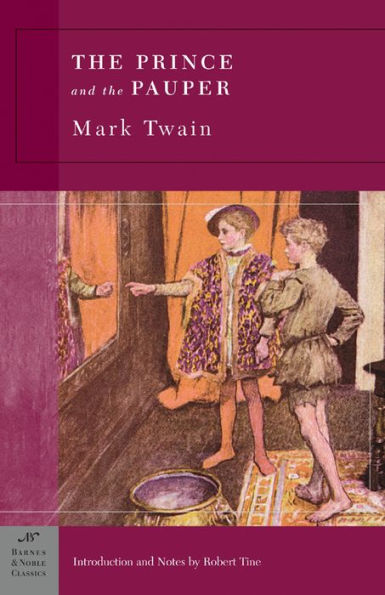Forget basketball; the real March Madness is this week’s new YA releases. You could read three books a day (do it, do it!) this week and still have more on your list! A powerful debut about life in foster care, a time-traveling romance, and an update of Strangers on a Train will get your blood pumping, […]
- New introductions commissioned from todays top writers and scholars
- Biographies of the authors
- Chronologies of contemporary historical, biographical, and cultural events
- Footnotes and endnotes
- Selective discussions of imitations, parodies, poems, books, plays, paintings, operas, statuary, and films inspired by the work
- Comments by other famous authors
- Study questions to challenge the readers viewpoints and expectations
- Bibliographies for further reading
- Indices & Glossaries, when appropriate
When Mark Twain’s The Prince and the Pauper was published in 1881, the Atlanta Constitution sang its praises in no uncertain terms: “The book comes upon the reading public in the shape of a revelation.” A timeless tale of switched identities, Twain’s story revolves around the miserably poor Tom Canty “of Offal Court,” who is lucky enough to trade his rags for the gilded robes of England’s prince, Edward Tudor. As each boy is mistaken for the other, Tom enters a realm of privilege and pleasure beyond his most delirious dreams, while Edward plunges into a cruel, dangerous world of beggars and thieves, cutthroats and killers. Befriended by the heroic Miles Hendon, Edward struggles to survive on the squalid streets of London, in the process learning about the underside of life in “Merry England.”
With its mixing of high adventure, raucous comedy, and scathing social criticism, presented in a hilarious faux-sixteenth-century vernacular that only Mark Twain could fashion, The Prince and the Pauper remains one of this incomparable humorist’s most popular and oft-dramatized tales.
Robert Tine is the author of six novels, including State of Grace and Black Market. He has written for a variety of periodicals and magazines, from the New York Times to Newsweek.
- New introductions commissioned from todays top writers and scholars
- Biographies of the authors
- Chronologies of contemporary historical, biographical, and cultural events
- Footnotes and endnotes
- Selective discussions of imitations, parodies, poems, books, plays, paintings, operas, statuary, and films inspired by the work
- Comments by other famous authors
- Study questions to challenge the readers viewpoints and expectations
- Bibliographies for further reading
- Indices & Glossaries, when appropriate
When Mark Twain’s The Prince and the Pauper was published in 1881, the Atlanta Constitution sang its praises in no uncertain terms: “The book comes upon the reading public in the shape of a revelation.” A timeless tale of switched identities, Twain’s story revolves around the miserably poor Tom Canty “of Offal Court,” who is lucky enough to trade his rags for the gilded robes of England’s prince, Edward Tudor. As each boy is mistaken for the other, Tom enters a realm of privilege and pleasure beyond his most delirious dreams, while Edward plunges into a cruel, dangerous world of beggars and thieves, cutthroats and killers. Befriended by the heroic Miles Hendon, Edward struggles to survive on the squalid streets of London, in the process learning about the underside of life in “Merry England.”
With its mixing of high adventure, raucous comedy, and scathing social criticism, presented in a hilarious faux-sixteenth-century vernacular that only Mark Twain could fashion, The Prince and the Pauper remains one of this incomparable humorist’s most popular and oft-dramatized tales.
Robert Tine is the author of six novels, including State of Grace and Black Market. He has written for a variety of periodicals and magazines, from the New York Times to Newsweek.

Prince and the Pauper (Barnes & Noble Classics Series)
256
Prince and the Pauper (Barnes & Noble Classics Series)
256

Product Details
| ISBN-13: | 9781593082185 |
|---|---|
| Publisher: | Barnes & Noble |
| Publication date: | 11/25/2004 |
| Series: | Oz Series |
| Pages: | 256 |
| Sales rank: | 247,898 |
| Product dimensions: | 7.94(w) x 5.24(h) x 0.70(d) |
About the Author

